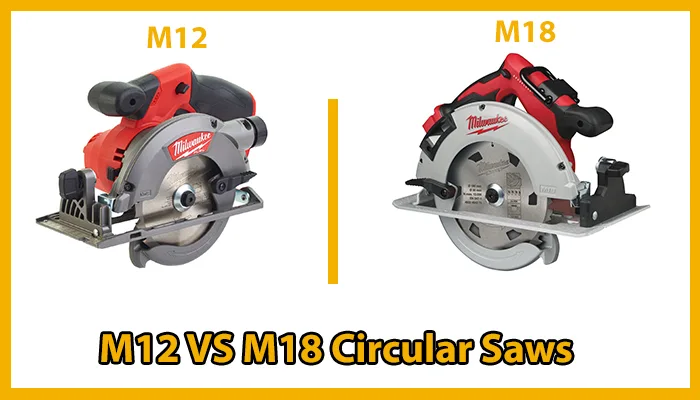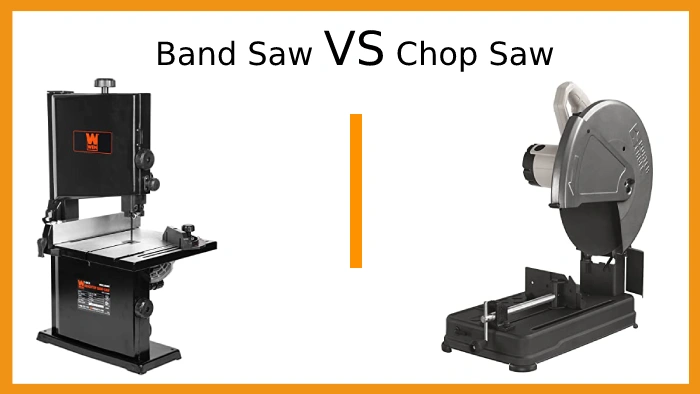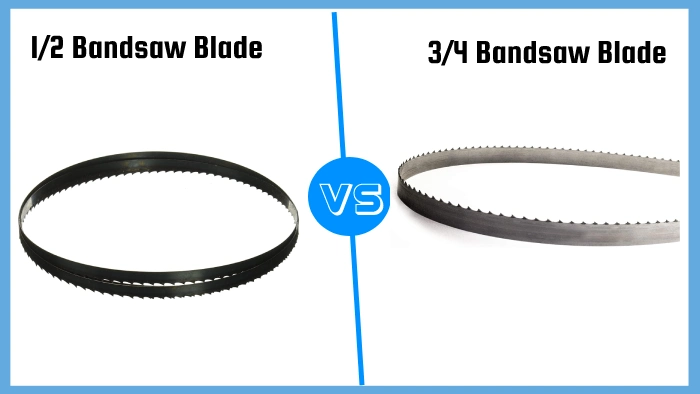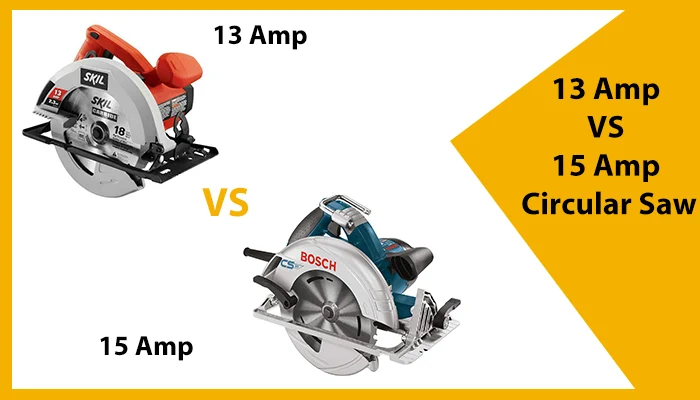Milwaukee m12 vs m18 circular saws: 9 Differences
Milwaukee circular saws are renowned for their high-quality craftsmanship, versatility, and durability. Two of the most popular options in their line-up are the M12 and M18 circular saws. While they share similarities, there are significant differences that I discovered when comparing both tools.
One difference that I found between the Milwaukee M12 and M18 circular saws is their cutting capacity. The M12 saw boasts a cutting capacity of 1-5/8″, which is ideal for delicate cutting tasks that require precision.
On the other hand, the M18 saw has a larger 7-1/4″ cutting capacity that makes it suitable for professional applications that require a broader range of materials and tasks.
I’ll share with you all the key differences between the Milwaukee M12 and M18 circular saws and help you decide which one is the best choice for your needs.
- Cordless Power Source
- Brushless Technology for Efficiency
- Compact and Lightweight Design
- High-Speed Steel Blade Material
- Durable with 5-Year Tool Warranty
- Durable Magnesium Guards for Protection.
- Ergonomic Soft-Grip Handle for Comfort.
- Aircraft Aluminum Shoe for Accuracy.
- Powerful 3,500 RPM Motor.
- Lightweight and Portable Design.
9 Differences Between Milwaukee M12 and M18 Circular Saws
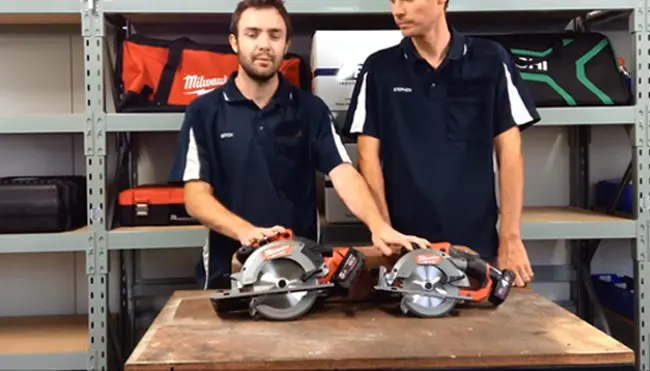
Milwaukee’s M12 and M18 Circular Saws differ in many categories, such as:
- Cutting Capacity
- Blade Compatibility
- Size and Voltage
- Battery Compatibility
- Weight and Portability
- Intended User Level
- Runtime and Battery Availability
- Overheating Issues
- Price
1. Cutting Capacity
M12 and M18 circular saws are best for their blades with different levels of cutting capacity. This distinction is significant when it comes to their performance and versatility. The M12 circular saw has a cutting capacity of 1-5/8′, while the M18 circular saw offers a larger cutting capacity of 7 1/4′.
The difference in cutting capacity between these two Milwaukee circular saws is significant and has implications for the types of tasks they can handle.
With its 1-5/8′ cutting capacity, the M12 saw is suitable for cutting through 2X dimensional lumber and is ideal for more delicate cutting tasks.
Meanwhile, the M18 saw’s extended cutting capacity of 7 1/4′ allows it to handle a broader range of materials and tasks, including professional applications.
This larger cutting capacity makes the M18 saw more versatile and suitable for demanding cutting jobs that require the ability to cut through thicker materials.
2. Blade Compatibility
The M12 circular saws are designed to accommodate smaller blades, typically measuring 5-3/8′ or 5-1/2′. This compact size limits your options for blade selection compared to the M18. However, it’s worth noting that M12 circular saws can handle a wide range of tasks, including cutting through drywall, plywood, and various materials.
Conversely, M18 circular saws can often accommodate larger 7-1/4′ blades, which opens up a wider range of blade options. With the M18, you can choose specialized blades for different cutting applications, such as ripping, cross-cutting, or fine finishing.
This ability to use larger blades can be advantageous when working with thicker materials or when you require a more robust cutting performance.
3. Size and Voltage
The M12 circular saw operates on a 12V voltage, making it more compact and lightweight than the M18. This lower voltage is ideal for tasks that require finesse and precision.
Conversely, the M18 circular saw runs on an 18V voltage, providing more power to cut through a wider range of materials and handle heavier tasks. However, this higher voltage results in a larger and heavier tool.
4. Battery Compatibility
The M12 saw is powered by M12 RedLithium batteries, which are specifically designed for this voltage range. On the other hand, the M18 saw relies on M18 RedLithium batteries that are specifically designed for the 18V system.
5. Weight and Portability

The M12 circular saw is generally lighter and more compact than its M18 counterpart. This makes it an ideal choice for users who require frequent mobility and need to perform overhead-cutting tasks.
The reduced weight of the M12 allows for easier maneuverability and less strain on the user during extended use.
In contrast, the M18 circular saw is heavier and bulkier than the M12. This added weight can affect portability, especially when working in tight spaces or for prolonged periods of time.
6. Intended User Level
The M12 circular saw is designed for entry-level users and DIY enthusiasts who prioritize ease of use and portability. It’s perfect for basic household tasks such as cutting through plywood or 2x4s.
As a result of its smaller size and lighter weight, the M12 is easier to handle and maneuver, especially for those with limited experience in using power tools.
On the other hand, the M18 circular saw is favored by professionals such as contractors, carpenters, and tradespeople who require a more robust and versatile tool.
It offers more power, longer battery life, and the ability to handle larger and tougher materials. The M18 is ideal for heavy-duty, professional-grade applications that demand precision and durability.
7. Runtime and Battery Availability
The M12 saw, being a lower voltage tool, may have a shorter runtime on a single battery charge compared to the M18. This means that if you choose the M12, you may need to have spare batteries on hand to ensure uninterrupted workflow.
I found that many users have reported limitations in battery life and power when using the M12 circular saw, especially for heavy-duty tasks.
Conversely, the M18 saw typically offers a longer runtime on a single charge due to its higher voltage. This can be advantageous when working on larger projects or when you need the saw for extended periods.
8. Overheating
During my research, I discovered that some users have mentioned that the M12 circular saw tends to overheat when used for extended periods or on demanding materials. This can be a concern as overheating can lead to reduced performance, decreased tool life, and potential safety hazards.
On the other hand, there’s no mention of overheating issues with the M18 saw, suggesting that it may handle heat better or have more effective heat dissipation mechanisms.
9. Price
The M12 circular saws are generally priced lower compared to their M18 counterparts. This makes them an attractive choice for budget-conscious users or those looking for an affordable addition to their tool collection.
Conversely, the M18 circular saws often come with a higher price tag. This is mainly due to their increased power and capabilities. The higher cost may be justified for professionals who rely on their tools for demanding tasks.
While the M12 saws offer a more budget-friendly option, the M18 saws provide a higher level of performance and durability, which can be worth the additional investment for those requiring heavy-duty cutting tasks.
Comparison of M12 and M18 Circular Saws
| Aspect | M12 | M18 |
| Cutting Capacity | 1-5/8″ | 7 1/4″ |
| Blade Compatibility | 5-3/8″ or 5-1/2″ blades | 7-1/4″ blades |
| Size and Voltage | 12V | 18V |
| Battery Compatibility | M12 RedLithium | M18 RedLithium |
| Intended User Level | Entry-level, DIY | Professional, Contractors, Tradespeople |
| Weight and Portability | Lightweight | Heavier |
| Runtime and Battery Availability | Shorter | Longer |
| Overheating Issues | Some reported issues | No reported issues |
| Price | Generally lower | Higher cost for increased power |
Can you use the same batteries for both M12 and M18 tools?
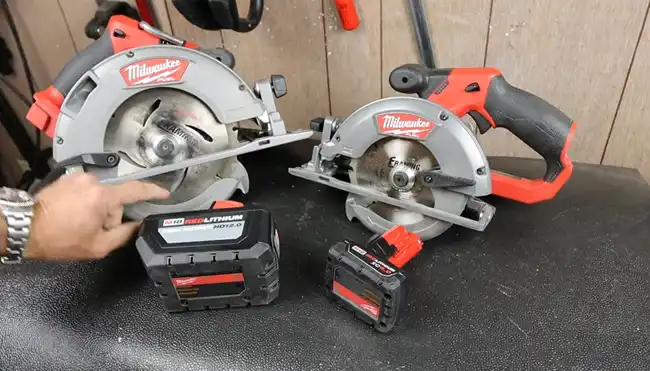
You cannot use M12 and M18 batteries simultaneously. Milwaukee M12 tools require M12 RedLithium batteries, while M18 tools use M18 RedLithium batteries.
Each tool series has its specific battery system, and attempting to use the wrong battery type can result in compatibility issues and potential damage to the tool or battery. It’s essential to ensure that you match the correct battery with the corresponding tool to maintain optimal performance and safety.
Do both M12 and M18 circular saws offer brushless motor options?
Both the M12 and M18 circular saws are equipped with brushless motors, which are highly advantageous in today’s circular saw market.
A brushless motor operates without brushes, which reduces friction and heat generation, resulting in improved efficiency. This means that you can expect longer runtime and increased power output compared to saws with brushed motors.
Additionally, brushless motors have a longer lifespan due to the absence of brushes that can wear out over time. With a brushless motor, you can enjoy a more consistent and reliable performance, even during demanding cutting tasks.
The brushless motor option is a valuable feature to consider when choosing between the M12 and M18 circular saws, as it can greatly enhance the overall performance and durability of your tool.
Choose Between Milwaukee M12 and M18 Circular Saws Based on Your Needs
When you pick between the Milwaukee M12 and M18 circular saws, keep the differences in mind that I’ve mentioned. Consider the scale of your projects and your experience level.
If you’re a DIY enthusiast or need a compact, lightweight tool for household tasks, the M12 may be your best bet. Its affordability and portability make it a practical choice.
However, if you’re a professional or require a powerful and versatile tool for heavy-duty applications, the M18 stands out with its extended cutting capacity and robust performance. Your choice ultimately depends on your specific needs and your preference for power and precision.
- Compact 12V Battery Power
- High Speed Steel Blade
- Brushless Motor for Efficiency
- Certified Frustration-Free Operation
- Circular Saw for Woodcutting
- Brushless Motor with 3900 RPMs
- Longest Tool Life
- M18 Redlithium Battery Efficiency
- Integrated Hang Hook for Convenience
- Compact and Lightweight Design
Last update on 2025-12-16 / Affiliate links / Images from Amazon Product Advertising API

